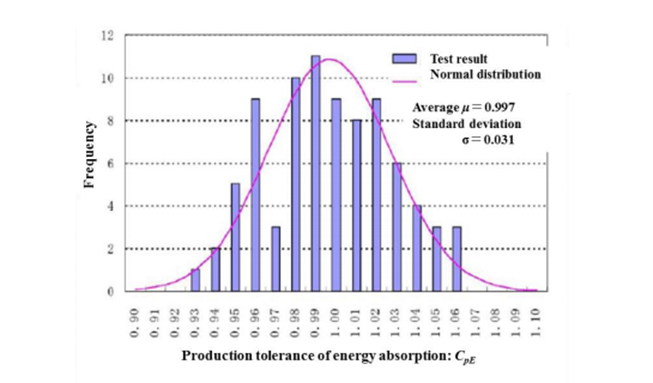In the design process, the performance of rubber fenders is considered in terms of deflection-reaction force characteristics in compression and the energy absorption calculated from these characteristics.
In the design process, the performance of rubber fenders is considered in terms of deflection-reaction force characteristics in compression and energy absorption calculated on the basis of these characteristics. Rubber has viscoelastic
properties and its performance is influenced by the natural environment and conditions of use. Factors influencing performance
Factors affecting performance are called influencing factors and must be taken into account when designing rubber fenders.
Simply a matter of convenience and ability of the test facility. Although the rated performance should be exhibited in actual berthing, the demonstrable performance is regarded as the standard performance. The practical design is expected to correspond to the design performance based on design conditions.
In such a case, the influence coefficients of the reaction force and energy absorption are also equivalent. When selecting a rubber fender, it is not necessary to determine strain-specific values, and determining only the coefficient at the design strain is sufficient. Thus, the strain-specific influence factors are considered only when required.
Rubber fenders are made primarily of natural rubber produced from sap and synthetic rubber made from petroleum;the rubber is mixed with chemicals, such as sulfur and carbon, and subsequently vulcanized by heat and pressure. Therefore, the fender performance is different under various conditions such as seasonal variations and differences in the manufacturing processes. Fig. shows an example of the frequency distribution of the ratios of the test values to the catalogue values of the energy absorption (CpE) of various rubber fenders pertaining to different manufacturers 4)
According to Fig. the production tolerance generally falls within ± 10%. Furthermore, since the change in shapes of performance due to the production tolerance is nearly negligible, the coefficients of reaction force and energy absorption may be equivalent
Leave A Reply
Your email address will not be published. Required fiels are marked